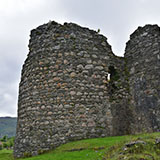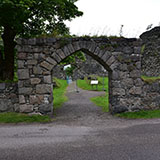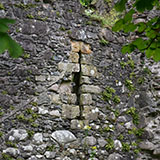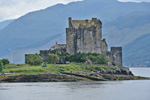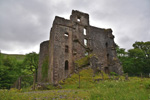History
Inverlochy Castle was built around 1280 by John Comyn, Lord of Badenoch and Lochaber and chief of the Clan Comyn. It may have been built on the site of an earlier Pictish fort. It is strategically located on the bank of the River Lochy, at the entrance to the Great Glen, a key passage through the Scottish Highlands.

In 1300, John Comyn died peacefully at Inverlochy Castle. His son, also John Comyn, was murdered in Greyfriars Church in Dumfries by Robert the Bruce in 1306. After Robert the Bruce was crowned King of the Scots, he captured and burned Inverlochy Castle. The castle was unoccupied for a time.
In 1431, clansmen of Alexander MacDonald, Lord of the Isles, defeated the larger army of King James I, led by the Earl of Mar, at the first Battle of Inverlochy, which was fought near the castle. The Earl of Mar barely escaped and returned to Kildrummy Castle. Allan Stewart, Earl of Caithness, was among those slain in the battle. Inverlochy Castle came under control the control of the Clan Cameron until 1501.
In 1505, Inverlochy Castle was granted to Alexander Gordon, 3rd Earl of Huntly, who was charged with restoring the castle by King James IV for use as a Royal garrison. His brother William Gordon became master of Inverlochy until he was slain at Flodden.
In 1645, the castle served as a stopping point for Royalist forces under James Graham, 1st Marquess of Montrose, during a campaign against the Covenanter forces of the Clan Campbell Chief, the Duke of Argyll. This culminated in the Second Battle of Inverlochy on February 2nd, 1645, which the Royalists won.
In 1654, Inverlochy Castle was abandoned after Oliver Cromwell built a large timber fort nearby, which was later replaced by a stone structure in 1690 and renamed Fort William.
In the 19th century, Inverlochy Castle was purchased by James Scarlett, 1st Baron Abinger, who built a Scottish Baronial mansion to the northwest of the castle, which is now the Inverlochy Castle Hotel. Some minor work on arrow loops and the battlements was undertaken on the castle before Queen Victoria's visit in 1873.
The castle is now in the care of Historic Environment Scotland.
Castle Highlights
Inverlochy Castle is an enclosure courtyard castle with rounded towers on each corner and arched gateway entrances on opposite ends of the castle. The moat that used to surround the castle is long gone.
The castle has remained largely unaltered in its state of ruin since the reign of Alexander III. It is a quadrangular castle with substantial 3-meter-thick curtain walls on each side and four rounded towers at the corners, the largest of which is the Comyn Tower, located at the northwest corner and serving as the castle's keep.
The arched gateways both contained a portcullis for added defense. The south gateway may also have had an inner gatehouse or barbican.
The castle grounds at Old Inverlochy Castle can be thoroughly explored in an hour or two. A visit should be combined with a day exploring the town of Fort William or a trip to Glencoe. Or a bit further away, Eilean Donan Castle near the Isle of Skye.
